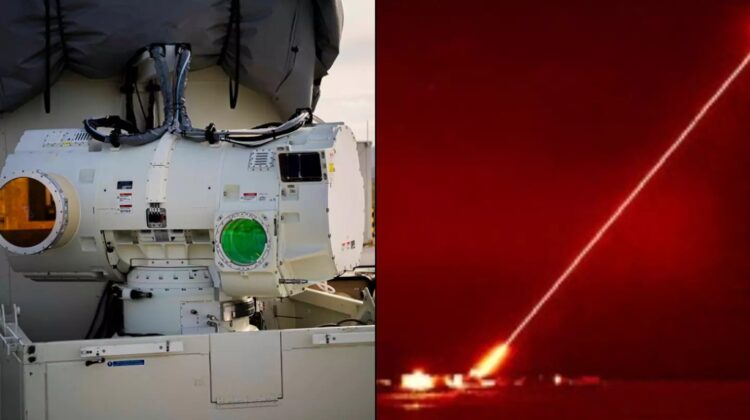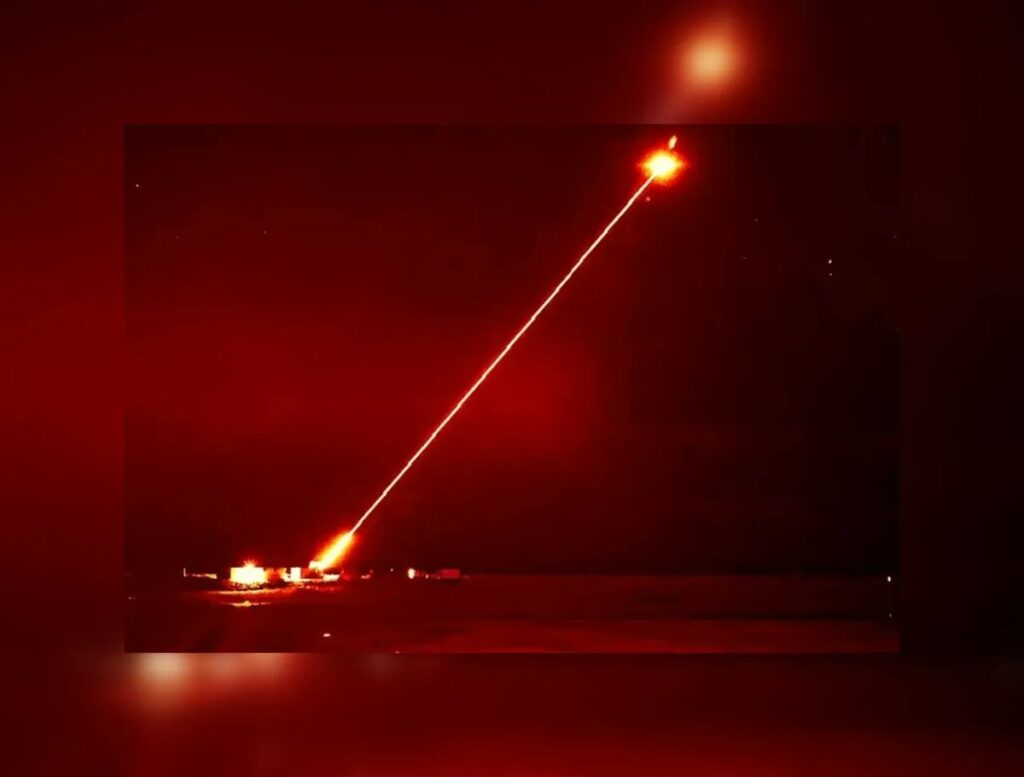
The UK Ministry of Defence (MOD) has recently showcased its cutting-edge laser directed energy weapon (LDEW), known as DragonFire.
In the picturesque archipelago of the Hebrides, off the west coast of the Scottish mainland, the MOD conducted a demonstration of DragonFire, targeting an airborne object. While precise details of the test remain classified, the event produced striking imagery of a red beam hitting an object in the night sky.
This weapon is extraordinarily precise, capable of striking a coin-sized target from 1 kilometer (0.62 miles) away. The MOD has kept its potential range under wraps, citing classification, but asserts that “it is a line-of-sight weapon and can engage with any visible target.”

Image credit: UK Ministry of Defence
Although DragonFire might look like something out of Star Wars, it offers significant advantages over conventional ammunition. The MOD and private industry have invested £100 million into the DragonFire system, viewing it as a potential cost-saving measure in the long run.
Traditional methods of downing drones involve using missiles that cost around £1 million ($1.28 million) each. In contrast, DragonFire can achieve similar results for less than £10 ($12.8) per shot. Despite its intense energy output, firing DragonFire for 10 seconds costs about the same as running a household heater for an hour.
Collateral damage is also minimal with lasers. A misfired missile can cause extensive unintended damage, but a laser beam will simply travel until it is absorbed and scattered harmlessly by the Earth’s atmosphere.
“This type of cutting-edge weaponry has the potential to revolutionise the battlespace by reducing the reliance on expensive ammunition, while also lowering the risk of collateral damage,” stated UK Defence Secretary Grant Shapps.
“The DragonFire trials at the Hebrides demonstrated that our world-leading technology can track and engage high-end effects at range. In a world of evolving threats, we know that our focus must be on getting capability to the warfighter, and we will look to accelerate this next phase of activity,” added Shimon Fhima, Director of Strategic Programmes for the MOD.
Despite the promise, challenges remain before battlefields resemble a scene from a sci-fi movie. Gianluca Sarri, Professor at the School of Mathematics and Physics at Queen’s University Belfast, explained that laser weaponry requires sustained focus on a target, and maintaining stability on a moving platform, such as a ship in rough seas, or targeting a fast-moving object, is difficult.
Nevertheless, other militaries worldwide are also exploring this innovative technology. For example, in February 2022, the US Navy demonstrated a laser weapon capable of disabling or destroying incoming subsonic missile targets, whether in the air or on the sea.
The DragonFire’s potential to transform modern warfare by providing a cost-effective, precise, and low-collateral damage option marks an exciting development in defense technology. As the MOD continues its trials and refines this technology, the future of battlefield engagement looks increasingly high-tech and efficient.

Leave a Reply